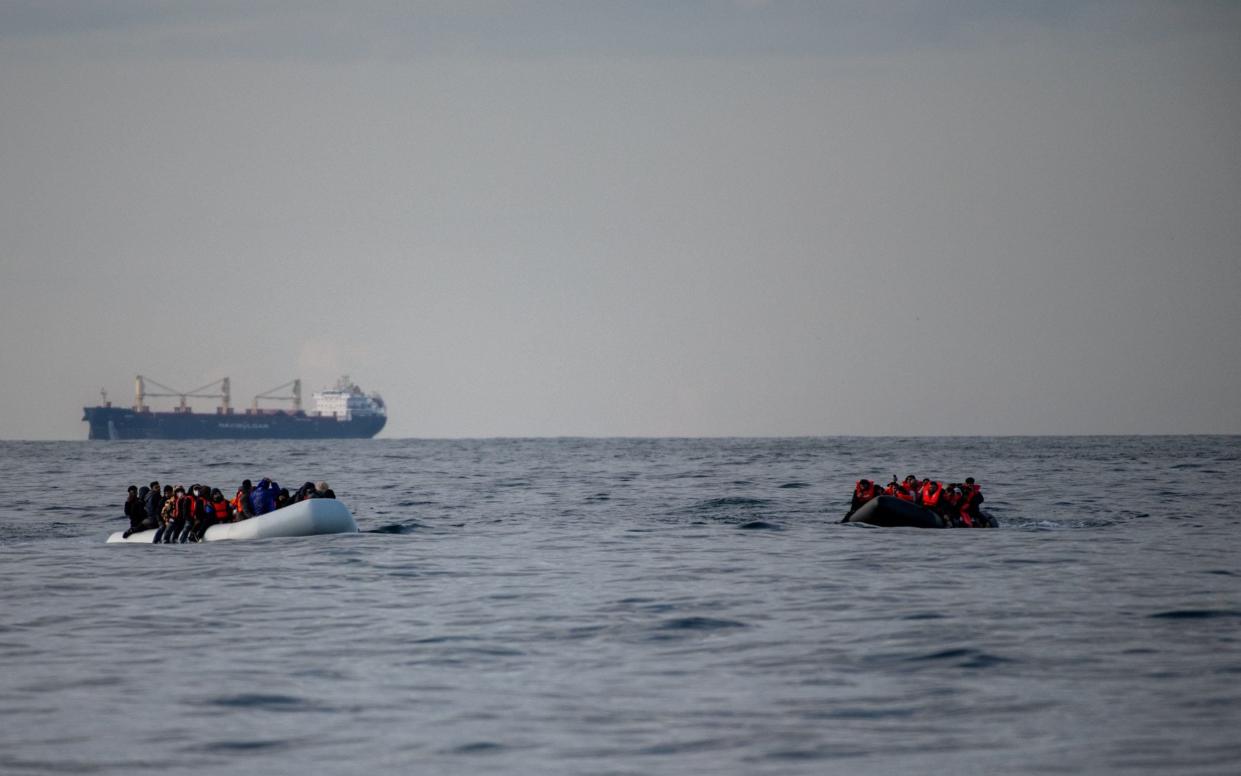Europe’s migrant crime wave is coming to Britain

Europeans have in recent decades been told many untruths about mass migration. Vast people transfers into our continent from the developing world would make us richer, we were assured, not just economically but culturally, too. When it became apparent at various points that the picture was somewhat less rosy, the goal posts shifted: mass migration was sold as a moral imperative as well as a fact of life, like the weather, that simply couldn’t be helped. Perhaps the greatest of these whoppers was the insistence from some academics and journalists that there was no connection between immigration and crime.
But that lie is starting to unravel. The Danish government recently published data on the crime rates of people in Denmark broken down by country of origin. It shows a trend which can be seen in virtually every Western European country which collects such data: non-Western immigrants and their descendants are vastly overrepresented in violent crime. In Denmark, this group makes up 9 per cent of the population but, from 2010-2021, accounted for 25 per cent of the country’s violent crime convictions – a trend which mirrors the picture in Finland, Norway and Sweden.
In Denmark and Sweden, immigrants are twice as likely to commit violent crime as the native populations. The pattern becomes even starker with certain types of crime: in Sweden, from 2013-17, immigrants were three times more likely likely to be registered as a suspect for assault than the native population – which grows to four times for robbery, and five times for rape.
The problem often becomes more pronounced as more migrants (and asylum seekers in particular) arrive. Sweden’s annual migration figures ballooned more than five-fold from the mid 80s to more than 160,000 by the mid-noughties, many of which came seeking asylum. During this time, the Swedish economist Tino Sanandaji notes that the foreign-origin population’s “share of total registration for crime as suspects’’ increased from 31 to 58 per cent – and from 42 to 72 per cent for homicide. This likely underrepresents the crime share of certain groups, as immigrants from East and Southeast Asia commit negligible levels of many types of crime when compared with migrants from Menapt (Middle East, North Africa, Pakistan and Turkey).
There are also important differences within immigration categories. In Norway, studies cited by Sanandaji in his book, Mass Challenge: The Socioeconomic impact of Migration to a Scandinavian Welfare State, show immigrants who arrived as refugees had higher crime rates than those who “came as family migrants, while labour migrants had even lower rates of crime”. Another study, conducted in the German state of Niedersachsen in 2018, showed that refugees were “overrepresented in crime” and that “crimes where refugees were registered increased over time”. The propensity towards violent crime is often strongest among refugees from Africa and the Middle East. In 2023, the German government released data showing that immigrants from Tunisia, Algeria and Morocco made up 8.5 per cent of all asylum seekers suspected of serious violent crime, despite comprising just 0.6 per cent of the immigrant population.
This is the tip of an iceberg of useful information which could have informed European debates around immigration going back decades. But staunch advocates of mass migration often dismiss such findings as being the result of poverty and inequality. But this doesn’t hold water as numerous studies in Sweden and elsewhere have shown that poverty, while correlated with crime, does not cause it. Sweden, at the height of its migration wave, was after all one of the most prosperous and equal societies on earth – yet it experienced the greatest explosion of migrant-related crime in Europe. Sweden now has more bomb and grenade attacks than any country not at war, apart from Mexico.
It is to Europe’s credit that it has welcomed refugees from around the world with open arms in recent decades. And many of those arriving have repaid the gesture of good faith, making an invaluable contribution to our society. But it is also no secret that many of the predominantly young male asylum seekers arriving in Europe in recent years are in fact economic migrants. There may be a perverse selection mechanism at play where, among the people most willing to lie to gain entry to Europe, there’s a subsection without scruples in other areas that are significant causal factors in crime. It is also possible that a small minority of these people may have come to Western Europe to avail of its economic opportunities while not themselves possessing the qualities which made the West prosperous in the first place.

